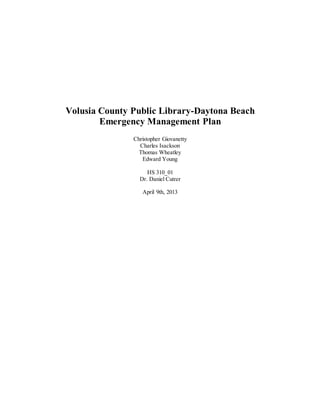The document provides an emergency management plan for the Volusia County Public Library in Daytona Beach, Florida. It identifies four main hazards: fire, hurricane/flooding, pandemic, and active shooter. For each hazard, it outlines mitigation, preparedness, response, and recovery strategies. Key recommendations include installing sprinkler systems and fire extinguishers, conducting monthly fire drills, developing evacuation plans, and coordinating with local emergency services. The plan aims to minimize risks and damage from potential emergencies through preparedness and coordinated response.












































